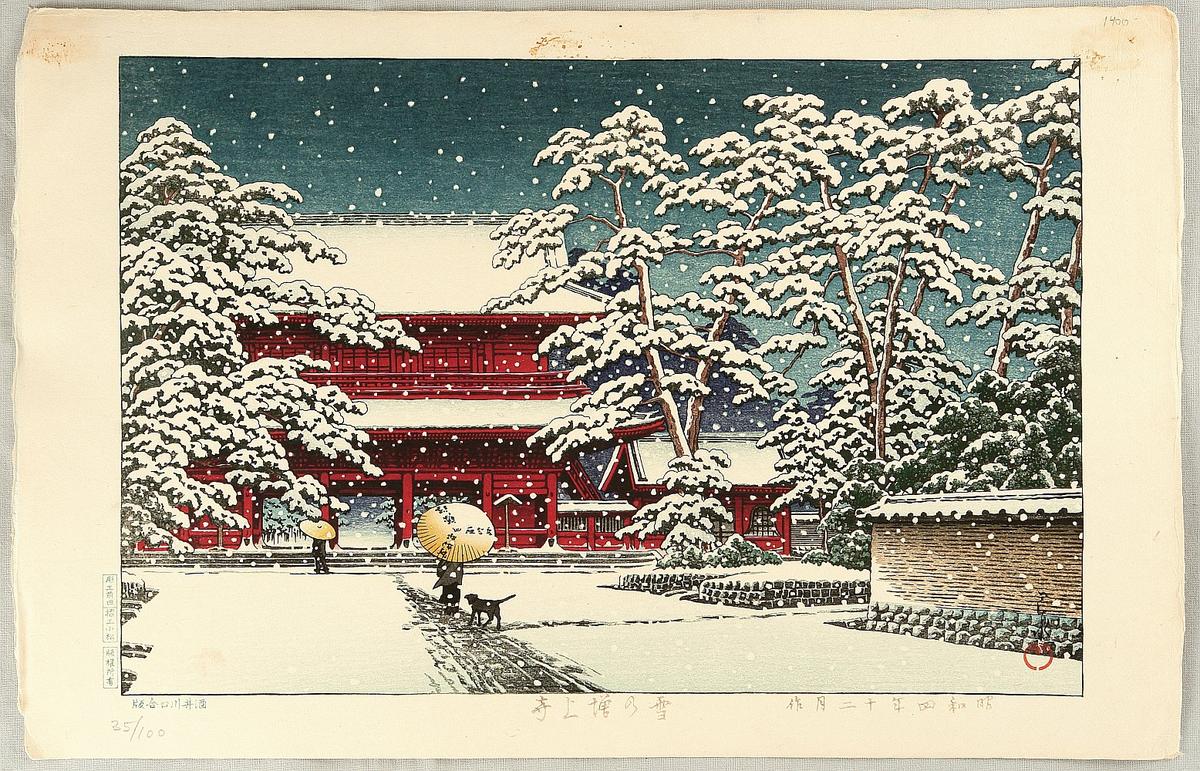It seems like many of the northern countries are getting quite a bit of cold weather from the latest polar vortex, and in some cases that cold weather is bringing a lot of snow. Thinking about that brought this haiku from Issa to mind.
from deep under the snow
the sound of a bell
—Issa

Ever the jokester, Issa is giving us a bit of a tall tale here: arriving at a temple and finding temple and bell completely under snow, but hearing the bell ring as usual. Even snow can’t stop the workings of temple life, it seems.
At the same time, he is making a spiritual statement as well. The temple bell, which represents Buddhism, will endure and continue no matter what disaster befalls it. Let’s dive more into this.
Issa followed Jōdo Shinshū (True Pure Land Buddhism). In that particular sect, they teach that we are living in a corrupt and fallen age, called Mappō (末法), an age of moral decline when while the teachings of the Buddha still exist, the ability to practice them correctly and achieve enlightenment through one’s own efforts (jiriki, 自力) is impossible. Therefore, the only hope, especially as Shinran taught, was to be be reborn in the Pure Land of Amida where one can finally practice correctly and be enlightened.[3]
Under that lens, we see that the snow here can very much be a metaphor for the difficulty with following the Dharma (i.e., practicing Buddhism) in this fallen world, but yet the practice is still available, it still persists beneath the hardship of the snow.
He wrote this early in his career, in 1790, when he was only 26 years old. This mixture of the spiritual and comedy would very much be a hallmark of his haiku throughout his life.
-
There are a number of things to do to ensure rebirth in the Pure Land, but the most important and most well-known is chanting the Nembutsu: “Namu Amida Butsu” (I take refuge in the Amida Buddha). ↩